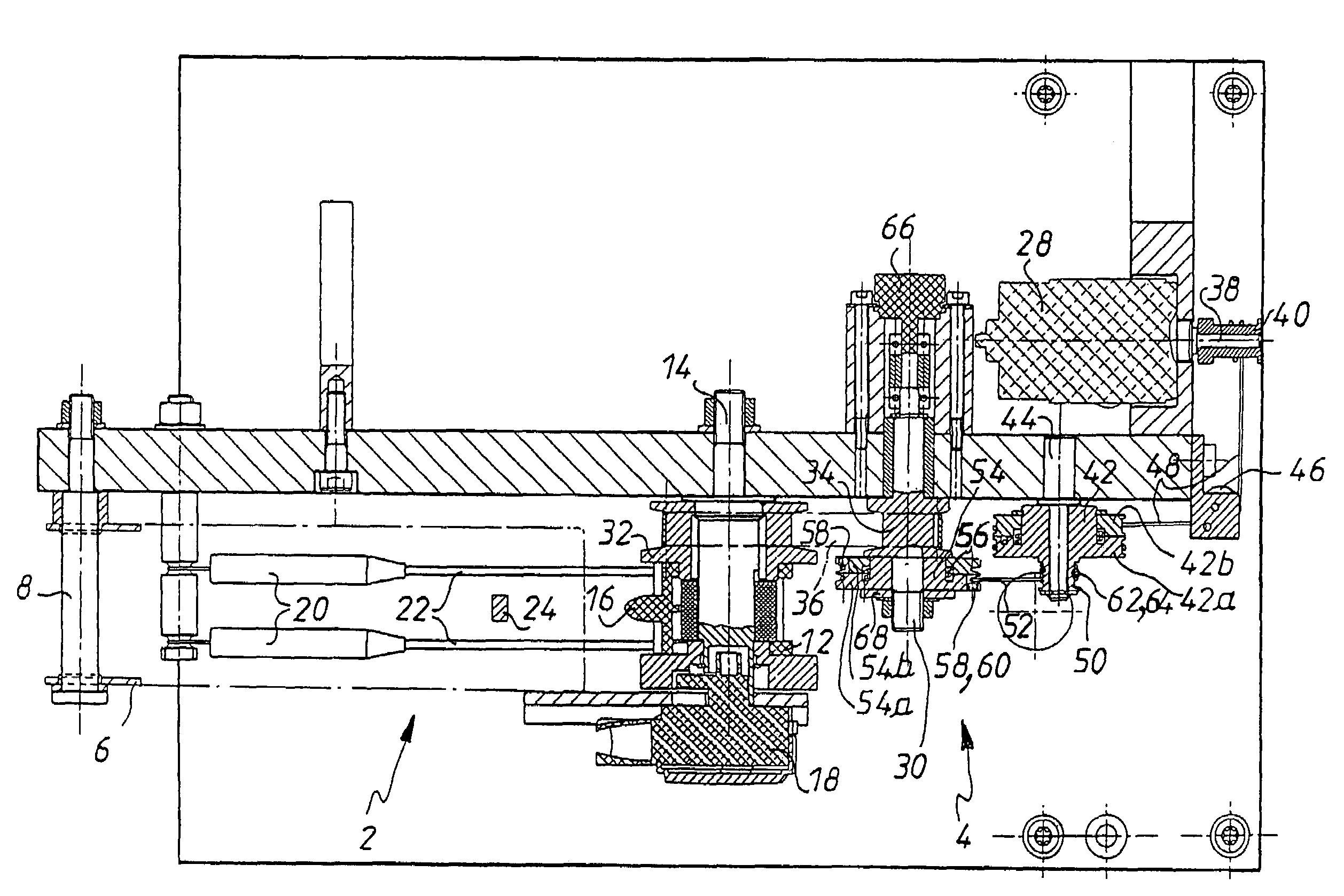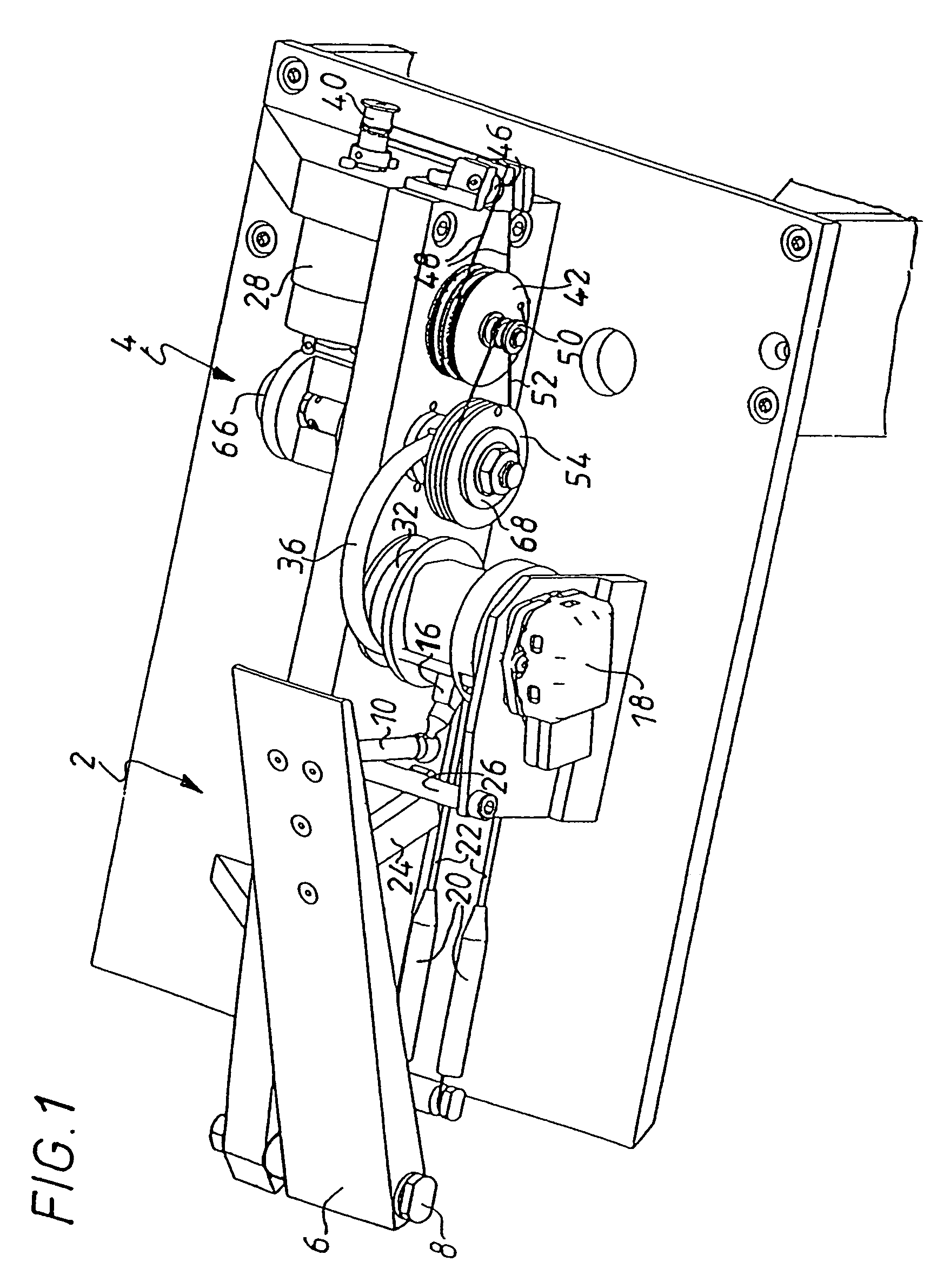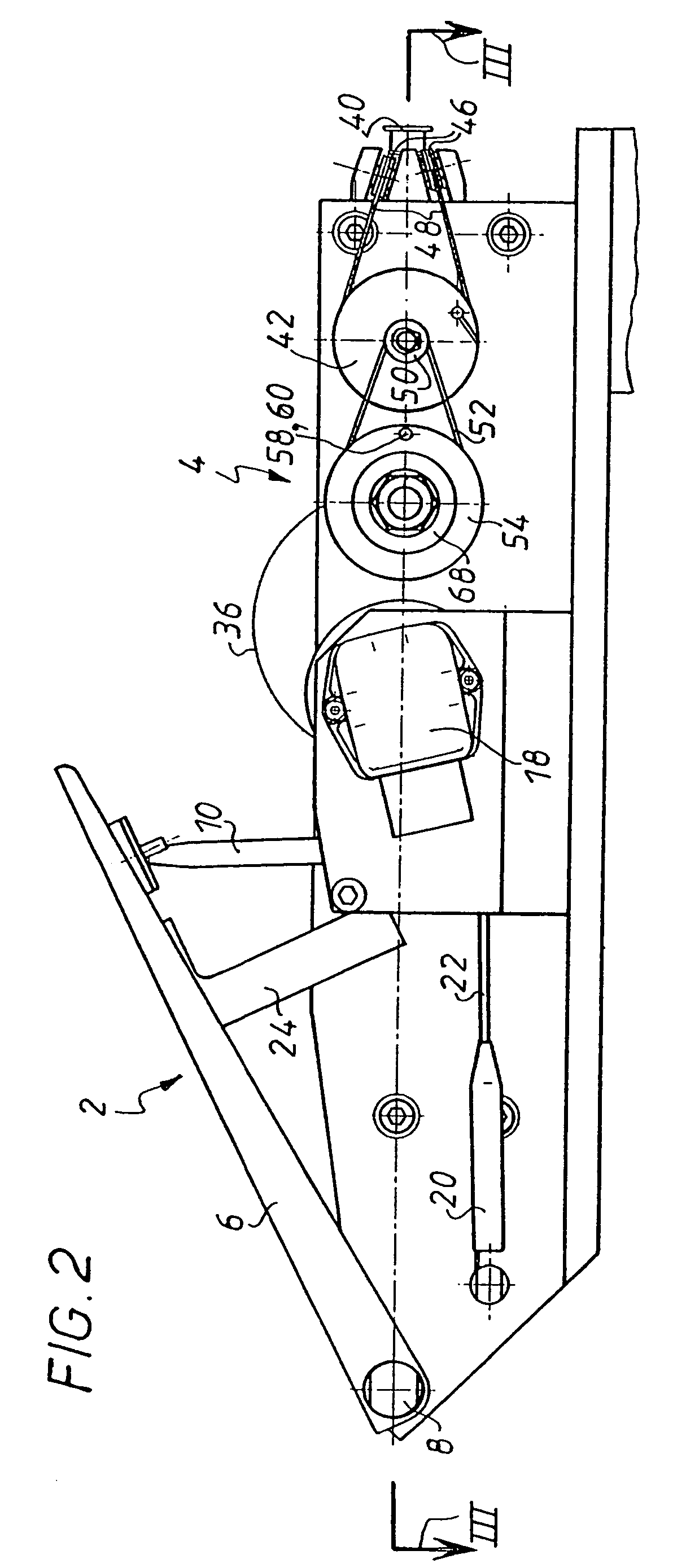Immediateforce-feedback pedal
- Summary
- Abstract
- Description
- Claims
- Application Information
AI Technical Summary
Benefits of technology
Problems solved by technology
Method used
Image
Examples
Embodiment Construction
[0025]The thrust return pedal shown in the drawing comprises, on the one hand, an actuating mechanism 2, hereafter also referred to as a control device, and, on the other hand, a thrust return mechanism 4. These two mechanisms are connected by a unidirectional connection described below and are both mounted on the same support.
[0026]The actuating mechanism 2 is a mechanism known to those skilled in the art. Such mechanisms are mounted in series on many motor vehicles.
[0027]The control device shown in the drawing comprises a control pedal 6 mounted such that it pivots about a spindle 8. At its end opposite to that of the spindle 8, the pedal is connected by the intermediary of a ball joint to a connecting rod 10 in order to act on a ring 12 mounted such that it pivots about a fixed spindle 14. The connection between the connecting rod 10 and the ring 12 is also made by means of a ball joint articulated at the end of an arm 16 integral with the ring 12. By means of this connection, wh...
PUM
 Login to View More
Login to View More Abstract
Description
Claims
Application Information
 Login to View More
Login to View More - R&D
- Intellectual Property
- Life Sciences
- Materials
- Tech Scout
- Unparalleled Data Quality
- Higher Quality Content
- 60% Fewer Hallucinations
Browse by: Latest US Patents, China's latest patents, Technical Efficacy Thesaurus, Application Domain, Technology Topic, Popular Technical Reports.
© 2025 PatSnap. All rights reserved.Legal|Privacy policy|Modern Slavery Act Transparency Statement|Sitemap|About US| Contact US: help@patsnap.com



